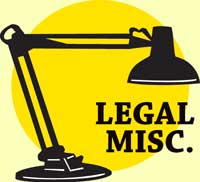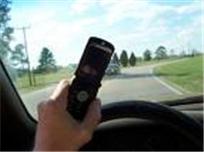Legal Issues Pertaining to Sweeping

Legal Issues Pertaining to Sweeping |
 |
Hand-held Cell Phones Banned for Commercial Drivers
by Ranger Kidwell-Ross Nationwide, beginning January 3, 2012, all commercial drivers, including truck and bus drivers are banned from using hand-held cell phones. There will be a stiff fine of up to $2,700 per offense for truckers and bus drivers caught using hand-held cell phones while driving.

The law allows only emergency responders and roadside assistance workers to use hand-held cell phones. An estimated four million commercial drivers will be affected nationwide. About 40,000 state laws have taken effect since the start of the year. Michigan's ban on text messaging for all drivers went into effect July 1, 2011. Penalties are $100 (first offense) and then $200, no points.
Here are some of the most frequently asked questions about the new law.Thanks to David Ross of Millennium Maintenance and Power Sweeping for providing this FAQ info.
1. Q: What is the effective date of the Mobile Telephone rule?
2. Q: Are wired or wireless earpieces allowed?
3. Q: Is Push-to-Talk allowed?
4. Q: Are holders of a commercial driver's license (CDL) subject to the regulation only when driving a CMV, as defined in 49 CFR 383.5, or any vehicle?
5. Q: What drivers are covered by the Federal rule: intrastate or interstate? CDL holders? All CMVs?
If a CMV driver is employed by a State or a political subdivision of a State (e.g. county, city, township, etc.), FMCSA safety regulations do not apply, even if the driver is engaged in interstate transportation. But if a CMV driver employed by a State or a political subdivision of a State is operating a vehicle that requires a CDL, the applicable State traffic laws would govern (e.g., Maryland's prohibition on the use of hand-held phones). The States have three years to implement by State law the disqualification provision.
6. Q: What is required of the employer in terms of company policy or training?
7. Q: Is dialing a phone number allowed under this rule?
8. Q: Can a driver reach for a mobile telephone even if he/she intends to use the hands-free function?
If the mobile telephone is not close to the driver and operable while the driver is restrained by properly installed and adjusted seat belts, then the driver is considered to be reaching for the mobile phone, which is prohibited by the rule.
9. Q: Are tow trucks exempt?

Rationale for the Scope of the Proposed RuleFollowing quotes are from the DOT/FMCSA Website where rationale was give for why the rule was proposed.Driver distraction can be defined as the voluntary or involuntary diversion of attention from the primary driving tasks due to an object, event, or person. Researchers classify distraction into several categories: Visual (taking one's eyes off the road), manual (taking one's hands off the wheel), cognitive (thinking about something other than the road/driving), and auditory (listening to someone talking). Research shows that using a hand-held mobile telephone while driving may pose a higher safety risk than other activities (e.g. eating and writing on a pad) because it involves all four types of driver distraction. For example, reaching for and dialing a mobile telephone are both visual and manual distractions. Using a hand-held mobile telephone may reduce a driver's situational awareness, decision making, or performance; and it may result in a crash, near-crash, unintended lane departure by the driver, or other unsafe driving action. This rulemaking proposes to restrict the use of hand-held mobile telephones because our research indicates that they are a source of driver distraction that could pose a safety risk. Specifically it would prohibit a CMV driver from reaching for, holding, or dialing a mobile telephone in order to conduct a voice communication while driving. Essentially, the CMV driver must be ready to conduct a voice communication in compliance with the proposed rule the moment he begins driving the vehicle. In an effort to understand and mitigate crashes associated with driver distraction, the U.S. Department of Transportation (DOT) conducted research concerning behavioral and vehicle safety countermeasures to driver distraction. Data from studies indicate that both reaching for and dialing a mobile telephone increase the odds of involvement in a safety-critical event such as a crash, near crash, or unintended lane departure. Both reaching for and dialing a hand- held mobile telephone are manual distractions (i.e., hands-off wheel) and require substantial visual distraction (i.e., eyes off forward roadway) to complete the task; therefore the driver may not be capable of safely operating the vehicle.
If you have comments or further information on this article, please let us know. |
© 2005 - 2022 World Sweeper
|
Legal Issues Contents
|